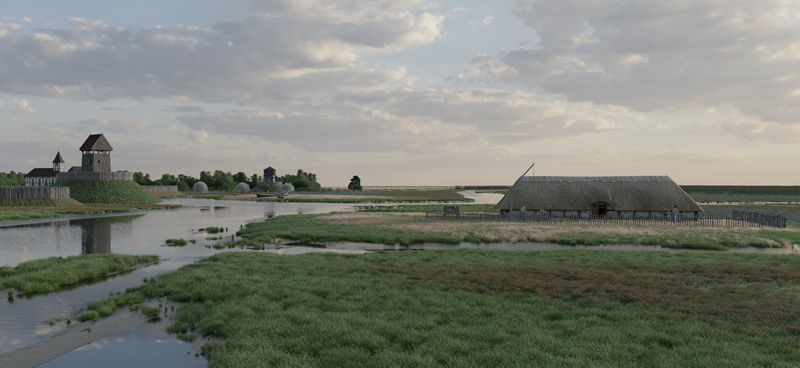A.J. Hillen-Schiller1*, J. van de Koppel1, J. de Kok
1 NIOZ
*corresponding author:
Introduction
Sea level rise is threatening coastal populations the world over, requiring adaptive measures such as coastal defences to be installed. An increasing number of these measures involve nature-based adaptations, relying on the evolutionary adaptations of coastal ecosystems such as salt marshes to protect human populations and infrastructure. In the Netherlands, this often requires the de-embankment of polders, a proposal which is regularly met with fierce resistance from many local residents. An important factor in this resistance is what is know as "shifting baseline syndrome" – the human tendency to assume that the way things are when you are young is the way things should be, and any change can only be for the worse. In the Dutch case, the present-day landscape is dominated by polders and dikes. But many modern settlements that are now surrounded by dikes began in the Middle Ages as simple, dike-free farms or villages on open salt marshes.
We utilize 3D panoramas of the landscape around the village of Wemeldinge, in Zeeland, as it would have been in the mid 12th century, following a scientific reconstruction. We present these to the public in a number of formats, in an attempt to open minds and hearts to the idea that an exposed salt marsh can be just as safe, or even safer than a massive dike.
Methods
We made use of previous geological and historical studies of Wemeldinge's past in combination with our own numerical model of salt marsh self-organization to reconstruct the landscape around the village prior to the systematic embankment of the region in the late 12th century. Using the 3D modelling software Blender, we apply 3D models of plants, animals, people, and buildings, to create photorealistic panoramic views of this landscape.
Results
We present our 3D images in a mobile app, allowing locals and visitors to Wemeldinge to view the past while standing on the same spot in the present-day landscape. These will also be available in local visitors' centres as a virtual reality experience, giving users the feeling that they are standing in the actual medieval landscape.

Figure 1: Life on the marshes of 12th century Zeeland.
I. Surname1*, F.N. Another-Surname2 , Y. Next-Surname2
1 University Name, Country; 2 Organization Name, Country
* Corresponding author: mail.name@organization.org


